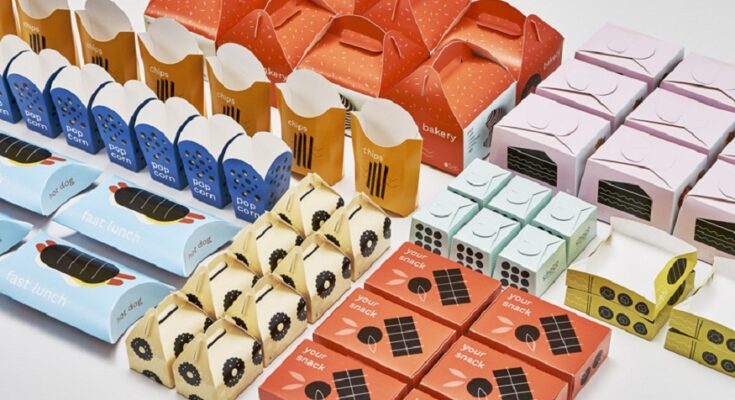In a world where consumers are increasingly seeking unique and memorable experiences, personalized food packaging has emerged as a powerful tool for brands to connect with their audience. Customized packaging not only enhances the visual appeal of products but also fosters a sense of belonging and loyalty among customers. By incorporating personal touches by a food packaging supplier into food packaging, brands can differentiate themselves in a crowded market and create lasting impressions. This article will explore ten effective ways to create personalized food packaging that resonates with consumers and elevates your brand.
1. Customizable Labels
Personalized labels are a powerful tool for enhancing customer connection and creating a sense of ownership over a product. By offering consumers the ability to customize labels with their names, special dates, or personal messages, brands can make their products feel more meaningful and tailored to individual preferences. This approach is especially effective for gifts or special occasions, where the personal touch can elevate the overall experience.
For instance, a bakery could provide customizable cake boxes where customers can write heartfelt messages for birthdays, anniversaries, or other celebrations. The ability to add a personal touch transforms the packaging into a keepsake that commemorates the special moment. Customers are more likely to feel a stronger emotional attachment to the product, which can lead to increased loyalty and the likelihood of repeat purchases.
Moreover, personalized labels can serve as a form of self-expression for consumers, allowing them to showcase their individuality and preferences. This level of customization sets the product apart from generic offerings and demonstrates the brand’s commitment to providing unique experiences tailored to each customer. By embracing personalized labels, brands can create a more intimate and memorable connection with their audience, fostering a sense of belonging and exclusivity that sets them apart in a crowded market.
2. Interactive QR Codes
Incorporating QR codes on your food packaging can create an interactive experience for consumers. These codes can link to personalized content such as recipes, cooking tips, or even videos showcasing the product’s journey from farm to table. By providing tailored information, you engage customers and make them feel more connected to your brand.
3. Unique Shapes and Designs
Using unique shapes and designs for your packaging can set your products apart from competitors. Consider creating custom molds that reflect the nature of your food item. This distinctive approach not only grabs attention but also enhances the overall experience of using the product.
4. Seasonal Theme
Personalizing food packaging according to seasons or holidays can create excitement and relevance for consumers. For instance, during Halloween, you could design packaging with spooky graphics or colors, while during Christmas, festive designs featuring snowflakes or holiday motifs would resonate well. This seasonal touch encourages customers to purchase products that align with their celebrations.
5. Eco-Friendly Materials
Sustainability has become a significant concern for consumers, influencing their purchasing decisions and brand loyalty. By adopting eco-friendly food packaging supplies wholesale, brands can effectively personalize their message and resonate with environmentally conscious customers. Utilizing biodegradable or recyclable materials not only demonstrates a commitment to sustainability but also aligns the brand with the values of its target audience.
Prominently displaying sustainability commitments on packaging can attract attention and communicate the brand’s dedication to environmental responsibility. For example, using clear labels that indicate the packaging is made from recycled materials or is fully biodegradable can enhance consumer trust and encourage purchases. Additionally, including information on how customers can recycle or repurpose the packaging after use adds value and empowers consumers to participate in sustainable practices.
This approach not only helps reduce waste but also fosters a sense of community among consumers who share similar values. By engaging customers in the sustainability conversation, brands can create a deeper emotional connection, encouraging loyalty and advocacy. Ultimately, eco-friendly packaging serves as both a practical solution and a powerful marketing tool, allowing brands to stand out in a competitive market while contributing positively to the environment.
6. Storytelling Through Packaging
Use your food packaging as a canvas to tell your brand’s story. Incorporate elements that reflect your brand’s heritage, values, or mission. For example, if your product is locally sourced, share the story of the farmers who grow the ingredients on the label. This narrative approach creates an emotional connection with consumers and makes them feel part of something larger.
7. Fun and Playful Designs
Injecting fun into your packaging design can appeal to families and children alike. Bright colors, playful illustrations, and interactive elements like puzzles or games on the packaging can make it more engaging for kids while also appealing to parents looking for enjoyable products for their children. This strategy not only captures attention but also encourages repeat purchases as families seek out fun experiences.
8. Limited Edition Packaging
Creating limited edition packaging can generate excitement and urgency among consumers. Collaborate with artists or influencers to design unique labels that are only available for a short period. This exclusivity encourages customers to purchase quickly before the limited editions run out, enhancing their sense of ownership over something special.
9. Personal Touches in Packaging
Adding personal touches such as handwritten notes or stickers on the packaging can make customers feel valued and appreciated. For instance, including a thank-you note inside the package or using stickers that reflect customer preferences can create a delightful unboxing experience that encourages loyalty.
10. Feedback-Driven Design
Engage with your customers by soliciting feedback on your packaging designs through surveys or social media polls. Understanding consumer preferences allows you to tailor your packaging more effectively to meet their desires and expectations. By involving customers in the design process, you foster a sense of community and investment in your brand.
In conclusion, creating personalized food packaging by a paper cup supplier is an effective strategy for enhancing customer engagement and building brand loyalty. By implementing these ten approaches—customizable labels, interactive QR codes, unique shapes and designs, seasonal themes, eco-friendly materials, storytelling elements, fun designs, limited edition releases, personal touches, and feedback-driven design—you can create memorable experiences that resonate with consumers long after they’ve made their purchase. In today’s competitive market, investing in personalized packaging not only differentiates your products but also fosters deeper connections with your audience, ultimately driving sales and cultivating lasting relationships with customers.




